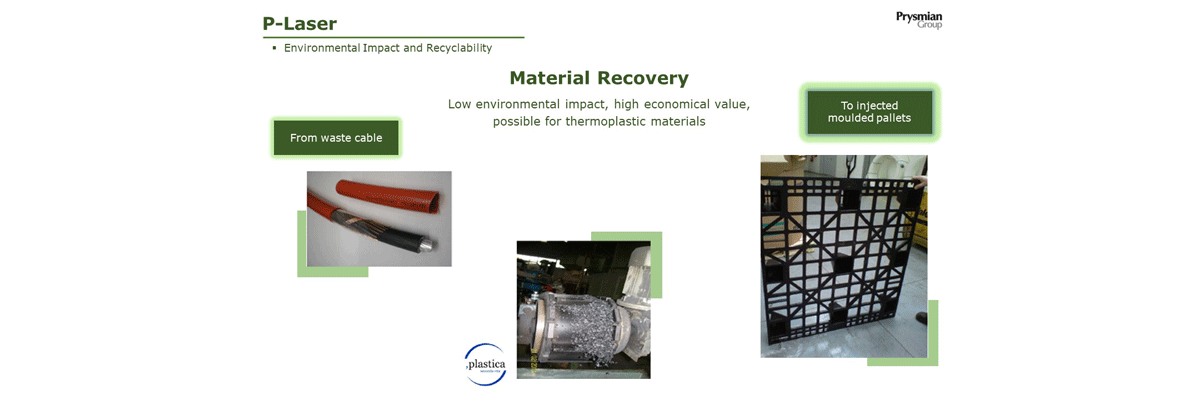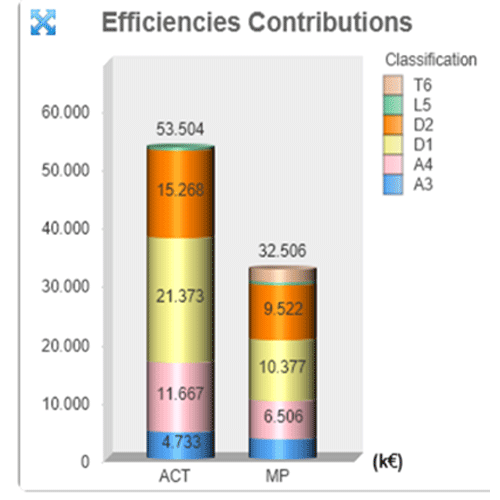Prysmian Group’s commitment in terms of end-of-life responsibility is clearly demonstrated by its breakthrough P-Laser technology, which the Company has been pioneering and developing since early 2000s. Indeed, this technology — which uses fully thermoplastic materials as power cable insulation — offers the most attractive advantages in the end-of-life phase of the product lifecycle, as it is possible to recycle 100% of the materials composing the cable, including its plastic layers.
In addition, this technology ensures an efficient manufacturing process, characterised by lower power consumption and energy savings. The absence of any degassing treatments avoids emissions in the atmosphere, with a lower environmental impact for the whole process. Moreover, the production of MV power cables requires a compact manufacturing site, with lower soil occupation. However, the most valuable feature of this technology is full recyclability of polymeric materials, with benefits in terms of carbon footprint.
Unlike cables with XLPE insulation — the insulation materials most widely used in today’s cable industry —, this technology offers the possibility of fully recycling the cable’s materials.




